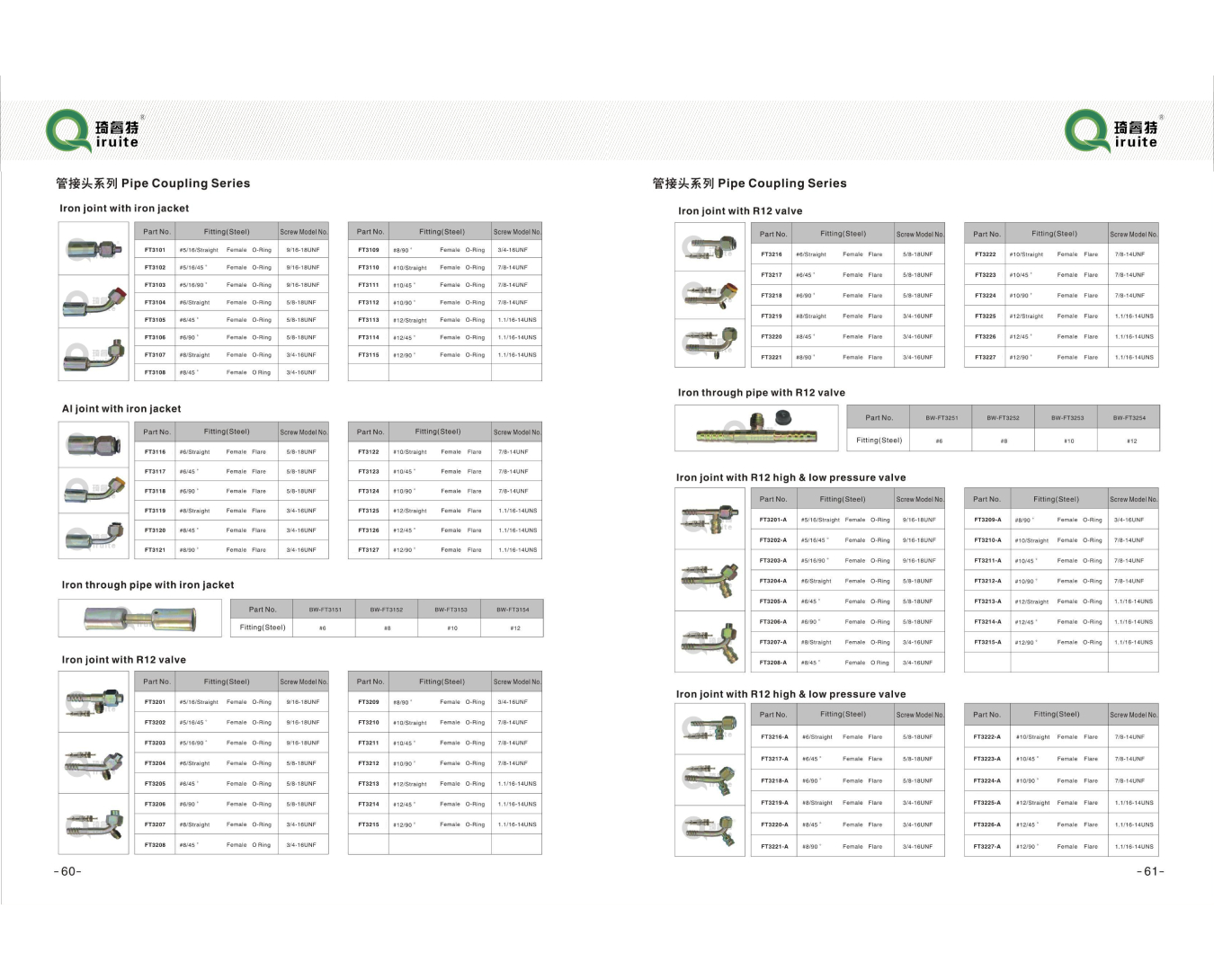Understanding the Importance of Brake Tubing in Vehicle Safety and Performance Optimization
The Essential Guide to Brake Tubing Importance, Types, and Installation
Brake tubing is a critical component of any vehicle's braking system, playing a vital role in ensuring safety and performance. It is responsible for transferring brake fluid from the master cylinder to the brake calipers or wheel cylinders, allowing for effective braking action. As a part of an intricate system that includes brake pads, rotors, and hydraulic systems, brake tubing is often overlooked, yet its importance cannot be overstated.
Importance of Brake Tubing
The primary function of brake tubing is to maintain the integrity and efficiency of the braking system. Whether in cars, trucks, motorcycles, or other vehicles, the reliable transfer of brake fluid is essential. Any leak or damage in the tubing can lead to a drop in hydraulic pressure, resulting in diminished braking performance. This could potentially lead to catastrophic failures during critical driving situations.
Moreover, the materials used in brake tubing can significantly affect a vehicle's performance. High-quality tubing can resist corrosion, pressure, and temperature fluctuations, thus enhancing durability and reliability. On the other hand, poor-quality tubing can lead to punctures or leaks, which could compromise safety.
Types of Brake Tubing
There are generally two main types of brake tubing used in vehicles hard lines and soft hoses.
1. Hard Lines Typically made from materials like steel or aluminum, hard lines are rigid and provide strong structural integrity. They are commonly used in the straight sections of the braking system. Hard lines are advantageous because they resist damage from the environment and can withstand high pressures, but they can be challenging to install in tight spaces since they require bending and precise fitting.
brake tubing

2. Soft Hoses Also known as brake hoses, these flexible tubes are usually made from rubber or reinforced materials that allow for movement and vibration absorption. Soft hoses are typically used at connections where mobility is required, such as between the chassis and wheel assembly. While flexible, they can be more susceptible to wear and tear over time, particularly from exposure to heat, moisture, and chemicals.
A crucial aspect of brake tubing is the use of adequate fittings and connections. Proper fittings help prevent leaks and ensure that the fluid is transferred efficiently within the system.
Installation and Maintenance
Installing brake tubing requires precision and attention to detail. When replacing or installing new brake lines, it's essential to ensure all measurements are accurate to avoid fitting issues. Worn or damaged tubing should be replaced immediately, as even minor flaws can lead to significant safety hazards.
Maintenance is equally important; regular inspection of brake tubing for signs of wear, corrosion, or leaks can help catch problems before they escalate. Signs such as spongy brakes, puddles of brake fluid, or visible wear on the tubing should not be ignored.
Conclusion
In conclusion, brake tubing may not be the most glamorous component of a vehicle, but its importance cannot be overstated. By ensuring the reliable transfer of brake fluid, it plays a crucial role in the effectiveness and safety of the braking system. Whether through hard lines or flexible hoses, choosing the right materials, maintaining integrity, and ensuring proper installation are imperative for safe vehicle operation. Drivers should regularly check their brake tubing and address any issues promptly, ensuring their vehicles remain safe on the road.
-
Ultimate Spiral Protection for Hoses & CablesNewsJun.26,2025
-
The Ultimate Quick-Connect Solutions for Every NeedNewsJun.26,2025
-
SAE J1401 Brake Hose: Reliable Choice for Safe BrakingNewsJun.26,2025
-
Reliable J2064 A/C Hoses for Real-World Cooling NeedsNewsJun.26,2025
-
Heavy-Duty Sewer Jetting Hoses Built to LastNewsJun.26,2025
-
Fix Power Steering Tube Leaks Fast – Durable & Affordable SolutionNewsJun.26,2025

